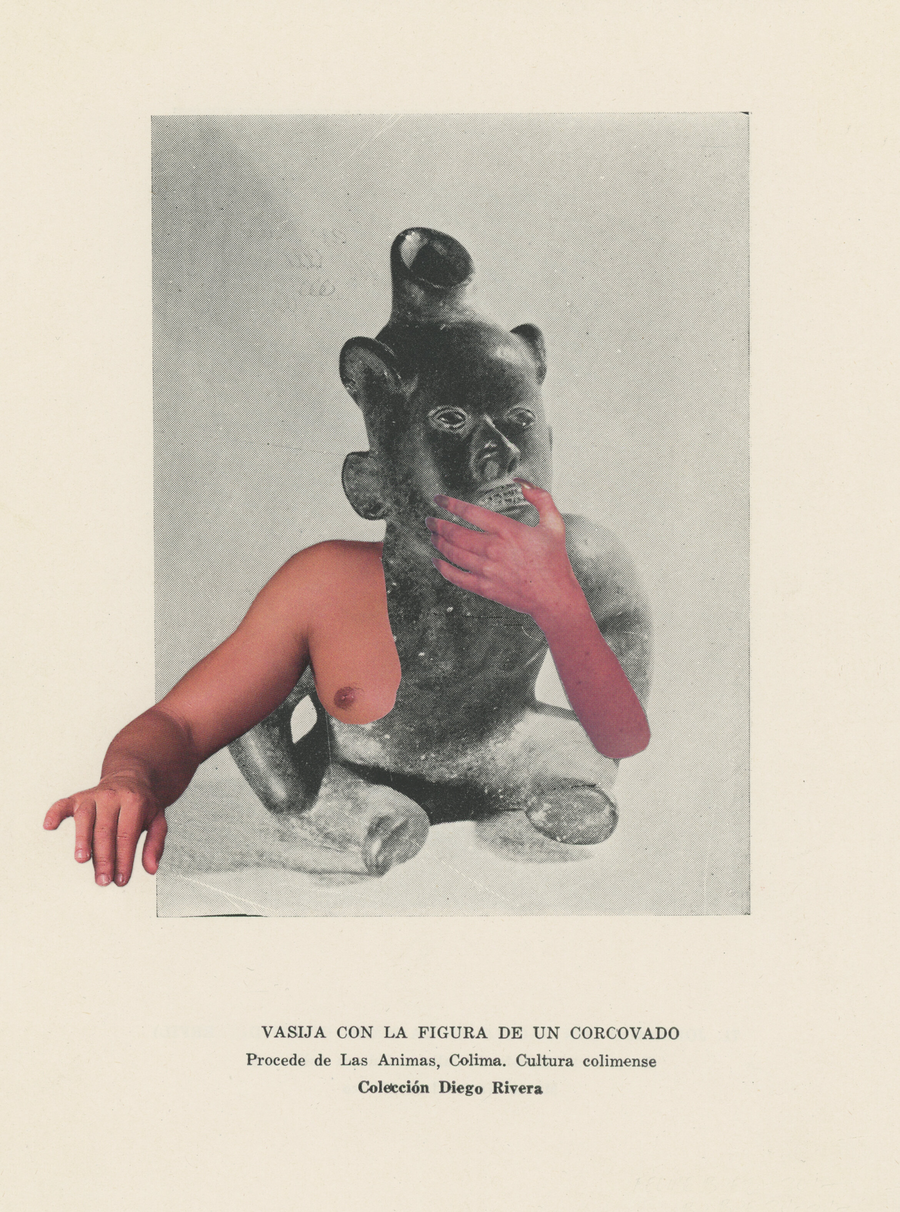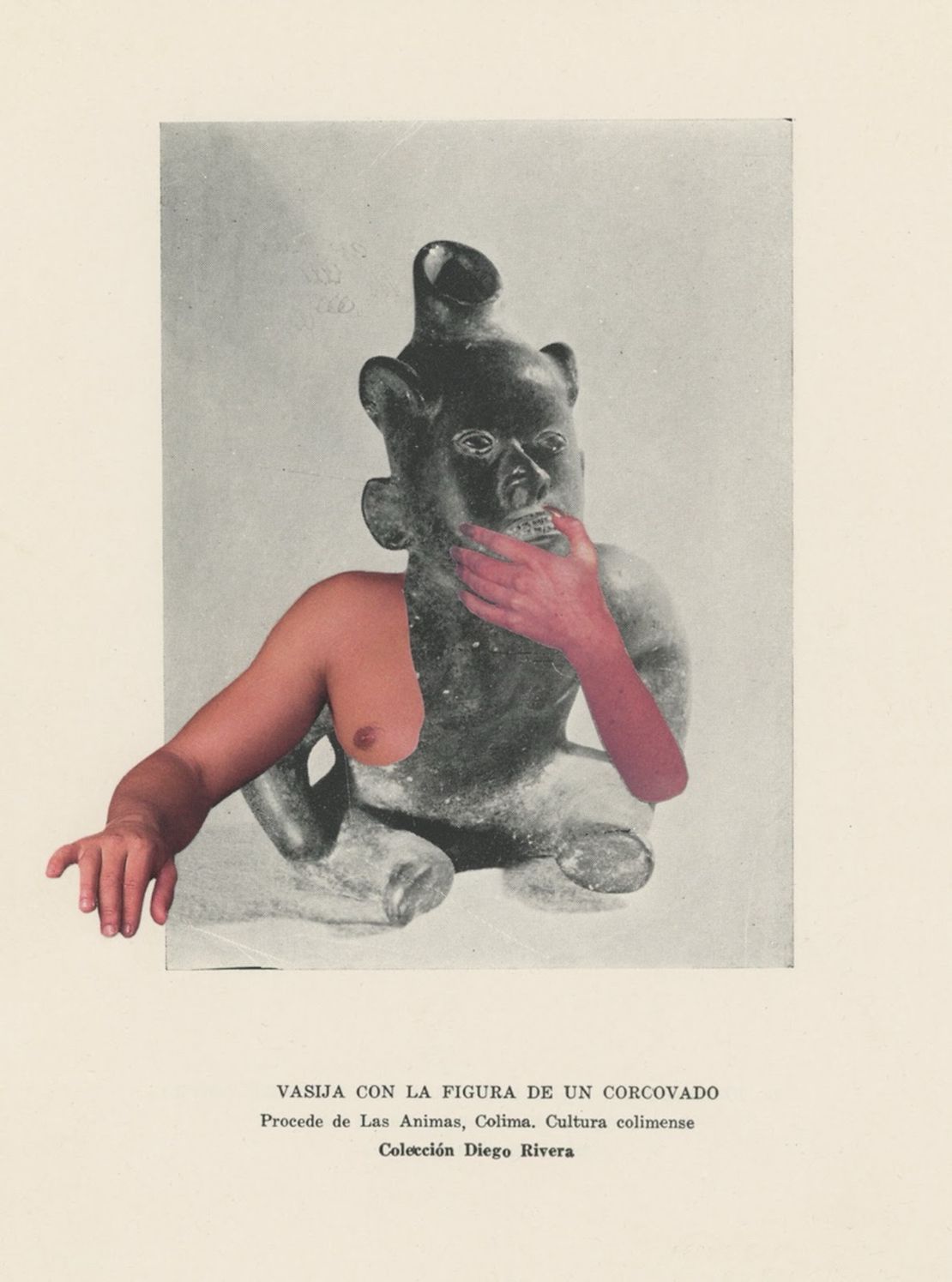Abstract
Baeza’s work is related to themes such as the body and cultural heritage due to the way it explores and questions the representation of the body in specific cultural contexts. These artworks merge visual elements from different cultures and time periods, creating an interaction between indigenous cultural heritage and contemporary Western culture. The collages raise questions about cultural appropriation, identity, and cultural constructions of the body.
Felipe Baeza’s artistic exploration delves into the human body’s complexities through abstraction, fragmentation, and the integration of celestial and earthly elements. In his captivating series, “People from Western Mexico II,” he masterfully combines human body parts with ancient objects, giving rise to hybrid and thought-provoking beings that evoke a sense of diverse eras. Baeza’s artistic representations intentionally dismantle conventional notions of the body, often embracing hypersexualization and incorporating gender stereotypes. Through his collage work in “People from Western Mexico II,” Baeza skillfully employs a grotesque and transformative aesthetic to portray the human form. He creates mesmerizing and enigmatic entities that transcend temporal boundaries by merging human limbs, torsos, and mouths with photographs of pre-Columbian artifacts. These composite figures exist simultaneously as more than human and anti-human, blurring the boundaries between self and other, masculinity and femininity, and subject and object. The disarticulated and hypersexualized portrayal of body parts adorned with gender markers like long painted nails, garters, jewelry, stiletto heels, and sneakers challenges societal norms and confronts stereotypical representations. Baeza’s compositions serve as a powerful commentary on identity, interweaving elements of indigenous cultures with contemporary notions of gender and sexuality. By blending ancient and modern visual languages, he prompts viewers to question established norms and invites dialogue on the intersections of culture, history, and personal identity. Through his exploration of the human body, Felipe Baeza creates an artistic space where the familiar becomes unfamiliar and the complexities of identity and representation are celebrated and interrogated.

